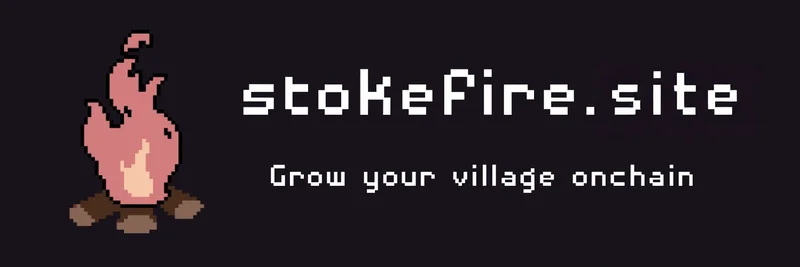Quick take
- There are multiple “FIRE” tokens on Base. The token at 0x7d530e… is different from the “FIRE” associated with the Stoke Fire game.
- Before trading, verify the exact contract, check on-chain data, and assess liquidity and security.
- Use tools like BaseScan, OKLink, and specialized dashboards to evaluate risk. For live tracking and trading, you can also use platforms such as GMGN.
Why this matters
“Ticker collisions” are common in crypto—many projects share the same name or symbol. That’s why your best defense is always the contract address. For FIRE on Base, the address you asked about is:
- 0x7d530eb6217b73df88ae81ad832475c8dfb41b1b
This is not the same as the FIRE token tied to the Stoke Fire mobile game, whose contract appears as:
- 0xd27c288fd69f228e0c02f79e5ecadff962e05a2b (per public docs at Stoke Fire)
Disambiguation: which FIRE is which?
- FIRE (address 0x7d530e… on Base): The focus of this guide. Public, project-specific documentation was not found during our scan, so treat this as an independent token requiring extra diligence.
- Stoke Fire’s FIRE (address 0xd27c2… on Base): A separate token referenced in the Stoke Fire game docs.
Essential links for the 0x7d530e… FIRE token
- BaseScan: https://basescan.org/token/0x7d530eb6217b73df88ae81ad832475c8dfb41b1b
- OKLink (Base): https://www.oklink.com/base/address/0x7d530eb6217b73df88ae81ad832475c8dfb41b1b
- Stoke Fire docs (for comparison): https://stokefire.xyz/docs
- Live tracker/trading page: GMGN token page
How to verify you’re looking at the right token
- Match the contract address
- Always paste 0x7d530e… directly into explorers like BaseScan or OKLink’s Base explorer instead of searching “FIRE.” Search results can be noisy or misleading.
- Check contract verification
- On BaseScan, look for “Contract Source Code Verified.” If verified, you can review the code and read functions like tax settings, minting, blacklist, and ownership.
- See if the contract is proxy/upgradeable. Upgradeable contracts can change behavior later, which requires extra trust.
- Review token parameters
- Total supply and decimals: Confirm they match any official docs (if available).
- Ownership status: Is the contract owner renounced? If not, what permissions remain?
- Tax/transfer logic: Look for functions indicating buy/sell taxes or blacklisting.
- Assess holder and liquidity distribution
- Holder concentration: A few wallets with very large shares can be risky.
- Liquidity pool (LP): Check if LP exists, who owns LP tokens, and whether LP is locked. Lack of locked LP can increase rug-pull risk.
Trading and liquidity: what to check first
- Confirm that the token has active liquidity on Base DEXs. No or thin liquidity means high slippage and execution risk.
- Typical places to route trades on Base include:
- Uniswap on Base: https://app.uniswap.org (select Base network, then paste the contract address).
- Aerodrome: https://app.aerodrome.finance/ (paste the contract address in the swap UI).
- GMGN live page for FIRE: https://gmgn.ai/base/token/fV1R5sZ5_0x7d530eb6217b73df88ae81ad832475c8dfb41b1b for a fast overview of pairs, trades, and basic safety checks.
- Always simulate a small test swap first. This helps uncover unexpected taxes, blocked transfers, or honeypot mechanics.
Using on-chain tools to research FIRE (0x7d530e…)
- BaseScan/OKLink
- Track holders, transfers, and contract events.
- Inspect the “Read/Write Contract” tabs for permissions.
- GMGN (analytics + trading)
- Security checks: Highlights common risks like honeypots or high taxes.
- Smart money tracking: See if notable wallets are interacting with the token.
- Automated trading: Optional automation is available via Telegram linking (see platform docs), but only consider after you fully assess risk.
- Direct link for FIRE: https://gmgn.ai/base/token/fV1R5sZ5_0x7d530eb6217b73df88ae81ad832475c8dfb41b1b
Risk checklist before you buy
- Contract verification: Verified source code and no suspicious functions?
- Owner privileges: Can the owner change fees, pause trading, or block wallets?
- Taxes: Are buy/sell taxes reasonable? Extreme taxes can trap liquidity.
- Minting/blacklisting: Is minting disabled? Any blacklist mechanics present?
- Liquidity: Is there sufficient LP? Is LP locked or owned by a trusted locker?
- Holder distribution: Any whale wallets or newly created hubs controlling large supply?
- Activity patterns: Are there bot-dominated trades or unusual distribution patterns?
- Official channels: Can you find an official website, X account, Telegram, or GitHub tied to the 0x7d530e… contract?
How to differentiate this FIRE from Stoke Fire’s token
- Compare addresses: 0x7d530e… vs. Stoke Fire’s 0xd27c2…
- Cross-check docs and socials: If a site or social claims to be FIRE, confirm it references the 0x7d530e… contract. If it references 0xd27c2…, that’s the game token, not this one.
- Avoid ticker-only decisions: Ignore names and logos—address is the only reliable identifier.
Practical steps to get started
- Paste 0x7d530e… into BaseScan and OKLink to review code verification, holders, and transfers.
- Open the GMGN FIRE page to scan pairs, recent trades, and safety flags.
- If you choose to trade:
Common red flags to watch
- Unverified or upgradeable contracts with broad admin powers.
- Sudden tax changes or trading pauses after liquidity builds.
- Large insider allocations or stealth mints post-deploy.
- Relabeled or recycled social accounts that never list the exact contract.
Bottom line
The FIRE token at 0x7d530e… on Base is distinct from the Stoke Fire game token. Because public documentation for this specific address is limited, treat it as a high-diligence situation: verify the contract, validate liquidity, and use trusted on-chain tools before committing capital. If you do proceed, route trades through reputable Base DEXs and consider using analytics/trading dashboards like GMGN to stay ahead of risks and market moves.


